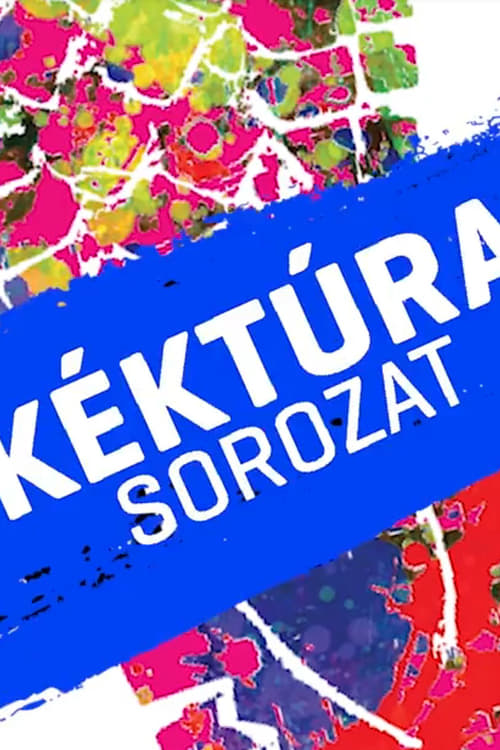
Ask Your Own Question
What is the plot?
In the opening scene of "Episode 1" of Taboos Without Taboos, the camera pans over a bustling urban landscape, setting the tone for a series that explores societal taboos. The protagonist, a young journalist named Mia, is introduced as she navigates through a crowded street, her expression a mix of determination and anxiety. She is on her way to an underground meeting where she hopes to gather information for her next big story.
As Mia arrives at the meeting location, a dimly lit basement, she is greeted by a diverse group of individuals, each representing different societal issues. The atmosphere is tense, filled with whispered conversations and furtive glances. Mia takes a seat, her heart racing as she prepares to confront the uncomfortable topics that will be discussed. The group leader, an older man named Victor, begins the meeting by outlining the purpose: to shed light on the taboos that society often ignores.
The first topic of discussion is mental health stigma. A young woman named Sarah shares her personal story of struggling with depression and the isolation she faced due to societal judgment. As she speaks, Mia captures every word in her notebook, her empathy evident in her furrowed brow and attentive gaze. The emotional weight of Sarah's experience resonates with the group, leading to a passionate discussion about the need for greater awareness and acceptance.
Following the mental health discussion, the group shifts to the topic of sexual orientation. A man named David bravely recounts his experiences of coming out and the backlash he faced from his family and community. His voice trembles with emotion as he describes the pain of rejection, and Mia feels a surge of anger at the injustice. The group rallies around David, offering support and sharing their own stories of acceptance and love, creating a powerful moment of solidarity.
As the meeting progresses, Mia becomes increasingly invested in the stories being shared. She realizes that these personal narratives are not just stories; they are cries for change. Inspired, she decides to write an article that will highlight these issues and give a voice to those who feel silenced. However, she is also aware of the potential backlash she may face from society for exposing such sensitive topics.
The scene shifts to Mia at her apartment, where she begins to write her article late into the night. The room is cluttered with papers and empty coffee cups, reflecting her dedication and the toll the subject matter is taking on her. As she types, her internal conflict surfaces; she grapples with the fear of public scrutiny versus the desire to advocate for those who are marginalized. This moment of vulnerability reveals her deep commitment to her craft and the people she aims to represent.
The next day, Mia meets with her editor, a skeptical woman named Linda, who questions the viability of the article. Linda expresses concern about the potential backlash and the impact it could have on Mia's career. Despite the doubts cast by her editor, Mia stands firm in her belief that the story needs to be told. She passionately argues for the importance of addressing these taboos, and Linda reluctantly agrees to publish the piece, albeit with a warning about the possible consequences.
As the article goes live, Mia's phone begins to buzz with notifications. The initial reactions are mixed; some readers express gratitude for the representation, while others respond with hostility and anger. Mia's emotional state fluctuates between pride and fear as she navigates the online backlash. She finds herself drawn into heated debates on social media, where she defends her work and the individuals whose stories she shared.
In the final scenes of the episode, Mia attends a public forum where the topics she wrote about are being discussed. The atmosphere is charged, with supporters and detractors present. As she listens to the heated exchanges, Mia feels a sense of purpose solidifying within her. She realizes that her article has sparked a necessary conversation, and despite the challenges ahead, she is committed to continuing her work in shedding light on societal taboos.
The episode concludes with Mia leaving the forum, her expression a mix of resolve and uncertainty. She understands that the journey ahead will be fraught with challenges, but she is determined to be a voice for those who have been silenced. The screen fades to black, leaving viewers with a sense of anticipation for the unfolding narrative.
Related Titles
Browse All Titles →
What is the ending?
In the ending of "Taboos Without Taboos," Season 1, Episode 1, the characters confront their personal taboos and the societal expectations that have shaped their lives. The episode culminates in a powerful group discussion where each character reveals their struggles and the weight of their secrets. As they share their truths, a sense of catharsis washes over them, leading to a newfound understanding and acceptance among the group. The episode closes with a montage of the characters reflecting on their experiences, hinting at the possibility of change and growth in their lives.
As the episode draws to a close, the scene shifts to a dimly lit room where the group has gathered for a final discussion. The atmosphere is thick with tension, as each character grapples with the weight of their unspoken truths. The camera pans across their faces, capturing the mix of anxiety and anticipation.
One by one, they begin to share their stories. The first character, visibly trembling, recounts a painful experience from their past that has haunted them for years. Their voice quivers, but as they speak, a sense of relief begins to wash over them. The others listen intently, their expressions shifting from concern to empathy.
Next, another character steps forward, their eyes glistening with unshed tears. They reveal a secret that has long been buried, one that has affected their relationships and self-worth. The room is silent, the weight of their confession hanging heavily in the air. As they finish, a wave of support washes over them, with others offering words of encouragement and understanding.
The third character, who has been quiet until now, finally finds the courage to speak. Their story is raw and emotional, filled with regret and longing. As they share, the camera captures the reactions of the group, each person visibly moved by the vulnerability on display.
As the discussion continues, the characters begin to connect the dots between their experiences, realizing that they are not alone in their struggles. The shared vulnerability fosters a sense of community, and the atmosphere shifts from one of isolation to solidarity.
In the final moments of the episode, the group stands together, united by their shared experiences. They express a commitment to support one another moving forward, acknowledging that while the journey ahead may be difficult, they are no longer alone. The camera pulls back, revealing the group in a tight circle, their faces illuminated by a soft light, symbolizing hope and the possibility of healing.
As the screen fades to black, viewers are left with a sense of anticipation for what lies ahead for each character. The episode concludes with a poignant reminder of the power of vulnerability and the importance of confronting one's own taboos. Each character, having faced their fears, is poised for growth, suggesting that the journey of self-discovery is just beginning.
Is there a post-credit scene?
In "Taboos Without Taboos," Season 1, Episode 1, there is no post-credit scene. The episode concludes without any additional content after the credits roll, focusing instead on the themes and discussions presented throughout the episode. The narrative wraps up with a strong emphasis on the topics explored, leaving viewers to reflect on the taboos discussed without any further scenes or revelations.
What taboo topics are explored in Episode 1 of Taboos Without Taboos?
In Episode 1, the show delves into the taboo of mental health, focusing on the stigma surrounding depression and anxiety. It presents personal stories from individuals who have faced these challenges, highlighting their struggles and the societal perceptions that often accompany mental illness.
Which characters are introduced in Episode 1 and what are their main conflicts?
Episode 1 introduces several key characters, including Sarah, a young woman battling depression, and her friend Mark, who struggles to understand her condition. Sarah's internal conflict revolves around her desire for acceptance while grappling with her mental health, while Mark faces the challenge of supporting her without fully comprehending her struggles.
How does the episode portray the impact of societal expectations on the characters?
The episode vividly illustrates the pressure Sarah feels from societal expectations to appear 'normal' and happy. This is depicted through scenes where she puts on a brave face in social situations, contrasting with her private moments of despair, showcasing the emotional turmoil that arises from trying to meet these expectations.
What specific events trigger the characters' emotional responses in Episode 1?
A pivotal event occurs when Sarah attempts to open up about her feelings to her family during a dinner gathering. The dismissive reactions from her relatives trigger a deep sense of isolation and frustration in her, leading to a powerful emotional breakdown that serves as a turning point in her journey.
How does the episode address the theme of seeking help for mental health issues?
The episode culminates in a scene where Sarah finally decides to seek professional help after a particularly difficult day. This moment is portrayed with a mix of fear and hope, as she grapples with the stigma of therapy but ultimately recognizes the necessity of taking that step for her well-being.
Is this family friendly?
"Taboos Without Taboos," season 1, episode 1, delves into sensitive and controversial topics that may not be suitable for children or sensitive viewers. The episode features discussions and depictions of themes such as:
-
Mental Health Issues: The portrayal of characters dealing with anxiety, depression, or other mental health struggles may be intense and could be upsetting for some viewers.
-
Substance Abuse: There are scenes that address addiction and substance use, which may be distressing for younger audiences or those sensitive to such topics.
-
Sexuality and Relationships: The episode explores complex relationships and sexual themes that may not be appropriate for children.
-
Cultural Tensions: Discussions around cultural taboos and societal norms may include confrontational or uncomfortable dialogues that could be challenging for younger viewers to process.
-
Emotional Distress: Characters experience significant emotional turmoil, which may evoke strong feelings and could be upsetting for sensitive individuals.
Overall, the content is geared towards an adult audience and may not be family-friendly due to its exploration of these heavy themes.


















